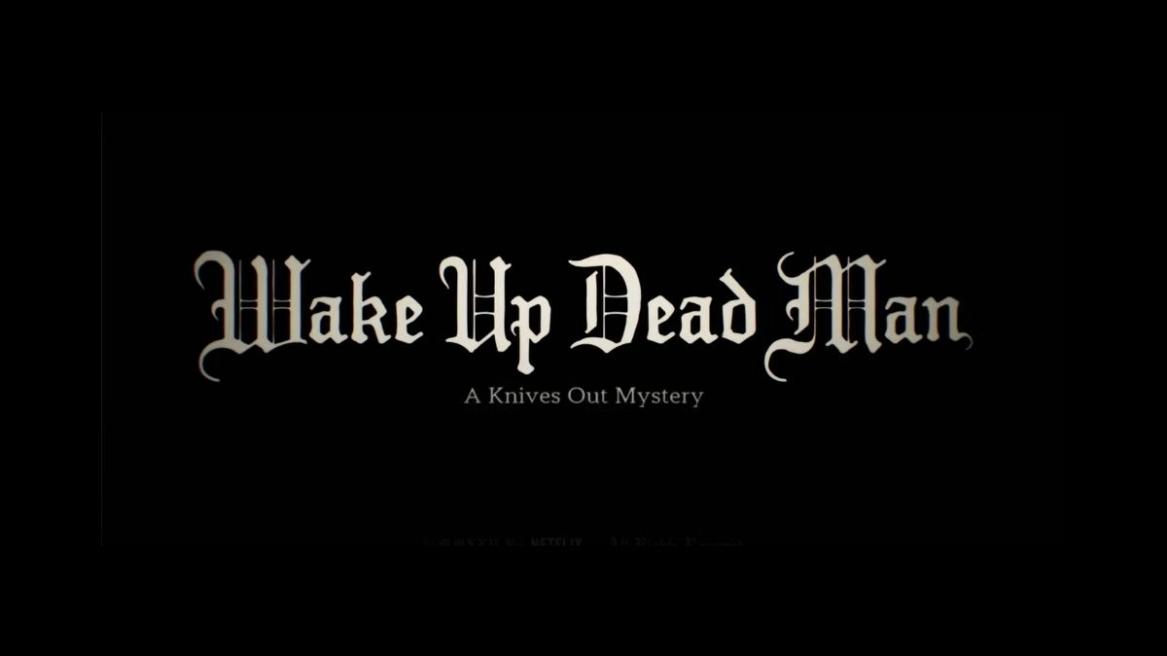Bill Atkinson, the pioneering Apple engineer whose work helped shape the Mac’s graphical identity and the broader arc of personal computing, died at age 74 after a battle with pancreatic cancer. He passed away at his home in Portola Valley, California, surrounded by family. His loved ones shared the news with a message that honored his impact and the unique mark he left on technology: a husband, father, and stepfather who lived a life that the world would forever notice for its creativity and intellect. Atkinson’s death marks the loss of a figure often described as the driving force behind some of the era’s most transformative software and visual innovations, projects that moved beyond mere code to redefine how people interact with machines on a daily basis. His career at Apple began with a rare blend of theoretical prowess and practical ingenuity, and the products he helped bring to life became the visual language of computing for millions of users around the world.
The Impossible Made Possible: From the University of Washington to Apple
William “Bill” Atkinson’s path to Apple began in an unlikely way, at the intersection of rigorous academic pursuit and a daring vision for personal computing. He was pursuing a PhD in neuroscience at the University of Washington when Steve Jobs came calling in 1978, recruiting him to join a small, fiercely ambitious team that would come to be known as Apple. The account of Jobs’s recruitment day, as Atkinson later recounted on Folklore.org in 2018, reads more like a cinematic moment than a routine employment interview: Jobs spent an entire day meeting with the company’s 30 employees and selling the budding potential of a new generation of computing. To seal the deal, Jobs employed a vivid visual metaphor, asking Atkinson to imagine surfing on the “front edge of a wave” rather than dog-paddling on the tail edge, underscoring how thrilling it could be to work at the edge of technological possibility.
Within a mere two weeks, Atkinson had decided to abandon his graduate studies and relocate to Silicon Valley, choosing a path that would redefine what a computer could be and how a person could work with it. His decision was not without personal costs or risk. His father, who had supported his education and anticipated a specific trajectory toward a doctorate and a stable career, initially reacted with anger and concern about what felt like a “wasted” decade of schooling. Yet, Atkinson’s certainty—fueled by a conviction that his talents could be applied to real-world impact—remained unwavering. This commitment would prove pivotal not only for his own career but for the broader trajectory of Apple and the computer industry, as he would become a central architect of the company’s earliest graphical interfaces and interactive tools.
Before his decisive move to Apple, Atkinson had already been contributing to projects that laid the groundwork for the Mac’s eventual interface and capabilities. He was involved in developing graphical routines for the Apple Lisa, a then-cutting-edge machine released in 1983 that served as a proving ground for ideas that would later appear on the Macintosh. His work during this period helped establish some of the fundamental concepts that would define personal computing’s user experience: a focus on visual clarity, intuitive controls, and efficient performance within the severe hardware constraints of the era. The Lisa’s interface and the technical innovations that supported it were among the earliest milestones in a broader push toward more usable, accessible computers for everyday users, and Atkinson’s contributions were central to translating abstract computer science into tangible, user-facing features.
This period also showcased a pattern that would recur throughout Atkinson’s career: the ability to turn clever algorithms and elegant code into practical, visible solutions that ordinary users could appreciate and rely on in their daily work. His early work on the Lisa Window Manager, which introduced overlapping windows and a pull-down menu bar, would become a blueprint for later personal computing interfaces. He even secured a patent for the pull-down menu concept, underscoring how a seemingly simple design choice could carry enormous implications for usability and the evolution of software interfaces. The combination of algorithmic insight and thoughtful interface design would come to define much of what Atkinson accomplished at Apple: a rare blend of technical excellence and a sensitivity to how people actually use computers.
Foundational Innovations at Apple: QuickDraw, the Lisa Window Manager, and the Mac Interface
Atkinson’s influence at Apple extended into a suite of pivotal innovations that collectively formed the backbone of the Macintosh user experience. One of his most enduring legacies is the QuickDraw graphics engine, the set of primitives that made the Mac’s graphical user interface possible. QuickDraw wasn’t merely a set of drawing tools; it was the engine that allowed the Mac to render smooth, responsive graphics in real time, enabling a level of interactivity and visual immediacy that was unprecedented for personal computers at the time. The performance and efficiency of QuickDraw allowed the Macintosh to present a graphical environment that felt immediate and intuitive to users, a factor that would be central to the Mac’s appeal and to the broader shift toward visually driven computing.
In addition to QuickDraw, Atkinson’s work on the Lisa Window Manager introduced the concept of overlapping windows to personal computing, a design decision that would become a standard across nearly all modern desktop interfaces. This development, coupled with the pull-down menu bar—an element he helped bring to life and that earned him a patent—helped define how users navigated software in a way that was both structured and accessible. The pull-down menus provided a consistent mechanism for invoking commands, while the windowing system allowed users to multitask visually in a way that was intuitive and efficient. The combination of these features created a cohesive, navigable environment that could scale with increasingly complex software and content without sacrificing usability.
A key technical milestone in this era was Atkinson’s discovery and refinement of algorithms for drawing shapes that developers could rely on even under strict hardware constraints. For example, the rapid rendering of rounded rectangles—known in the community as “roundrects”—was essential for producing the clean, friendly look that Apple’s early interfaces were known for. These innovations didn’t exist in a vacuum; they were part of a broader set of graphical primitives that made the Mac’s interface feel both polished and responsive. The ability to render complex shapes efficiently opened the door to richer, more expressive interfaces and set a standard for how graphical elements should behave across applications. This alignment of software capabilities and user expectations helped create the aesthetic and functional language of the Macintosh.
Another hallmark of Atkinson’s work during this phase was his development of strategies for efficient selection and interaction. He introduced the concept of the selection lasso and the “marching ants”—the animated dotted lines that delineate a selected region on an image. These ideas were not just clever visual flourishes; they provided practical, reliable ways for users to manipulate content, select regions, and perform edits with precision. MacPaint, released in 1984 alongside the Macintosh, became the platform on which these concepts could be demonstrated and refined. MacPaint established a conceptual framework for image editing software that would be echoed in later, more sophisticated tools such as Adobe Photoshop. The combination of the lasso tool and the marching ants helped set expectations for what it meant to interact with images on a computer, and Atkinson’s role in their development underscored the importance of intuitive, tactile control in graphical software.
In public discussions of Atkinson’s contributions, observers often highlight how his code and algorithms achieved a remarkable balance of efficiency, elegance, and practicality. He was praised for producing implementations that were not only powerful but also efficient enough to run within the hardware limitations of the era. This balance—achieving high performance without sacrificing clarity or maintainability—became a signature of Atkinson’s philosophy as a programmer and designer. The early Macintosh team, widely recognized for its genius, carried the burden of transforming a groundbreaking idea into a robust, widely usable product. In this context, Atkinson’s contributions stood out as essential, driving the feasibility of the original Macintosh system and providing a model for how future software could merge aesthetic appeal with technical rigor. The legacy of these efforts is evident in the way modern interfaces continue to reflect the principles he helped establish: clarity, responsiveness, and a design language that invites exploration.
MacPaint, Graphical Language, and the Creative Frontier
Perhaps the most enduring cultural impact of Atkinson’s work centers on MacPaint and the visual language it helped popularize within personal computing. MacPaint was more than a simple drawing program; it was a gateway that introduced millions of users to the concept of digital image editing. Its tools—enabled by the team’s early graphical innovations—allowed people to manipulate pixels in a way that previously hadn’t felt so accessible or immediate. Atkinson’s role in creating MacPaint, including the development of the tools that underpinned image editing and the interface that invited experimentation, helped establish a paradigm for how artists and hobbyists could engage with digital media. The program’s influence extended far beyond its own era, becoming a touchstone for the design and functionality of image editors that followed. The MacPaint ecosystem thus seeded a broader culture around digital art and visual experimentation, laying the groundwork for the kinds of creative workflows that would later define professional software suites.
In addition to the creation of MacPaint itself, Atkinson’s broader work on the Macintosh interface contributed to a shared visual vocabulary that would become familiar in countless creative applications. The interplay between the software’s graphical primitives and its interactive affordances created a consistent aesthetic and method of operation across tools. The result was a coherent experience that felt natural to use, encouraging experimentation and pushing the boundaries of what users expected from a computer screen. The synergy between the Mac’s hardware constraints and the software’s design choices elevated the experience of digital creation, enabling people to think of computers not solely as machines for calculation but as partners in design and expression. This shift in perception—the idea that computers could be used for artistic creation as well as productivity—was instrumental in broadening the audience for personal computing and expanding the perceived potential of software as a tool for creativity.
Tributes from industry observers frequently highlight Atkinson’s genius and the practical impact of his innovations. Analysts and historians have described him as among the most essential figures in the original Macintosh team, contributing to the “impossible” tasks that the hardware and software teams faced and helping to transform constraints into opportunities. The combination of elegant code and thoughtful design was, for many, the core reason the Mac’s interface felt so natural and immersive from the outset. The enduring respect for Atkinson’s work reflects not only the beauty of the techniques he devised but also the way those techniques enabled users to express themselves visually in new and meaningful ways.
HyperCard and the Hypermedia Revolution
Beyond the immediate graphical innovations of the Macintosh, Atkinson played a pivotal role in shaping how users could interact with software on their own terms through HyperCard. Initiated in 1985 and shipped in 1987, HyperCard introduced a new paradigm for software development: a hypermedia authoring environment that put a powerful set of tools into the hands of non-programmers. Atkinson’s vision for HyperCard was to democratize software creation by enabling people to assemble interactive programs using simple metaphors—stacks of cards that could hold graphics, sounds, text, buttons, and links. This approach lowered the barrier to entry for software development, inviting teachers, artists, and businesses to build customized applications without writing extensive code.
HyperCard’s influence extended far beyond its immediate features. It provided a practical, accessible model for linking information in a way that prefigured the World Wide Web’s hyperlinked structure, years before the Web would become ubiquitous. In education, HyperCard opened up new possibilities for creating interactive lessons that could adapt to different instructional contexts, supporting more engaging and personalized learning experiences. For artists and multimedia creators, the system offered a flexible platform for prototyping and delivering multimedia experiences, enabling experimentation with interactive storytelling, presentation formats, and artistic installations. In the domain of business, HyperCard supported the development of bespoke database applications and lightweight tools tailored to specific workflows, all without the need for traditional programming knowledge.
HyperCard’s impact on gaming was particularly notable. The platform supported a range of experimental titles, and one famous example is the 1993 first-person adventure Myst, which was originally built using HyperCard as its engine. This connection underscores how HyperCard’s intuitive, card-based metaphor could be extended into immersive worlds and complex experiences, influencing later game development paradigms and the broader philosophy of user-centric software design. Atkinson’s involvement with HyperCard thus sits at a crucial intersection of software design, education, art, and entertainment, illustrating how a single tool can catalyze a spectrum of creative and practical applications.
The broader significance of HyperCard also lay in how it embodied a philosophy of software as a learning and creation platform. By stripping away many of the barriers that kept people from programming, HyperCard fostered a culture of exploration and experimentation. The system’s ease of use, combined with its flexible capabilities, encouraged users to imagine new ways to integrate graphics, text, and interactivity—combining content and behavior in ways that were previously only accessible to expert developers. Atkinson’s design and implementation choices helped bring this vision to life, making HyperCard a landmark achievement in the evolution of personal computing and an enduring example of user-driven software innovation.
Dithering, Aesthetics, and the Visual Language of Early Mac Graphics
In addition to his work on user interfaces and interactive software, Atkinson also made a lasting contribution to the look of early Mac graphics through a remarkable technical invention: a high-contrast dithering algorithm for the two-color Mac canvas. The original Macintosh could display only black or white pixels, with no grayscale gradients by default. To overcome this limitation, Atkinson developed an innovative dithering technique that created the illusion of grayscale images by using a pattern of dots with varying densities. This approach produced the distinctive stippled, grainy look that became synonymous with early Mac graphics, lending a bold, high-contrast aesthetic that remained visually striking even as technologies evolved.
The Atkinson dithering approach did more than deliver a practical solution to a hardware constraint. It established a visual language that resonated with artists, designers, and developers who appreciated the expressive potential of limited color palettes. The technique fostered a style that could be leveraged creatively, allowing artists and indie game makers to produce distinctive visuals with tools and workflows that embraced the unique look. Contemporary creators continue to explore and celebrate this aesthetic, with modern tools providing web-based numerically precise or interactive means to emulate the classic Atkinson effect. The enduring appeal of this technique in digital art and game design speaks to how a seemingly technical optimization can become an iconic, culturally resonant style that informs and inspires new generations of creators.
The broader purpose of this contribution extended beyond its immediate graphic utility. It reflected a philosophy that guided Atkinson’s broader approach to software design: making technology expressive and accessible, even when constrained by hardware or software limits. The dithering algorithm illustrated that constraints could drive creativity rather than hinder it, and it showcased the importance of carefully balancing performance with the opportunity for artistic and visual experimentation. The effect is still felt in discussions of early Mac graphics and in the way digital artists think about color, texture, and perception, illustrating how technical decisions can influence cultural aesthetics long after their initial implementation.
Life After Apple: Innovation, AI Perspectives, and a Love of Nature
Atkinson’s influence did not end with his departure from Apple in 1990. He continued to pursue ambitious projects that reflected his diverse interests and his desire to push technology in new directions. He co-founded General Magic with colleagues Marc Porat and Andy Hertzfeld, a venture that aimed to develop personal communicators at a time before smartphones became ubiquitous. The ambition of General Magic was to create portable, integrated communication devices, a vision that foreshadowed many elements of mobile computing and the connected lifestyle that would come to define the early 21st century. The project highlighted Atkinson’s willingness to explore frontier territories in technology, seeking to merge hardware and software in seamless, innovative ways that could transform everyday communication.
Later, Atkinson joined Numenta, an artificial intelligence startup, signaling his engagement with one of the most dynamically evolving fields in technology. He described the work there as fundamentally important to society—perhaps even more so than the personal computer era and the rise of the Internet—emphasizing his belief in the transformative power of intelligent systems and pattern recognition. This commitment to machine intelligence reflected a broader arc in his career: a continual interest in going beyond the surface of how software works to explore deeper, more powerful ways for computers to learn, adapt, and assist human users. Beyond his corporate endeavors, Atkinson also pursued nature photography, applying the same careful attention to detail and composition that characterized his programming work. His 2004 book, Within the Stone, offered close-up images of polished rocks that revealed hidden worlds of color and texture, illustrating the artist’s eye for discovery in both digital and natural realms. This late-life shift toward photography demonstrated his enduring fascination with the beauty of complexity and the ways in which small details can reveal larger contexts.
In November 2024, Atkinson publicly announced his pancreatic cancer diagnosis, sharing on social media that he had “already led an amazing and wonderful life.” This message underscored a perspective well aligned with the spirit of his career: a willingness to confront difficult realities with grace and to celebrate the value of a life spent in curiosity, creation, and collaboration. The timeline also intersected with a broader narrative within the tech world, as his long-time colleague Steve Jobs’s own passing in 2011 had left a lasting imprint on the industry and its memory. Atkinson’s story, in its later chapters, thus fits into a broader arc of Apple’s history in which visionary individuals shaped technology in ways that would resonate for decades.
The impact of Atkinson’s work was widely acknowledged by his peers and successors. In the wake of his passing, Tim Cook, Apple’s chief executive, paid tribute on X, underscoring Atkinson’s status as a “true visionary” whose creativity and groundbreaking work on the Mac would continue to inspire generations. Cook’s words reflected a consensus within the industry: Atkinson’s contributions extended beyond particular software features; they defined a way of thinking about user experience, design, and the potential of personal computing. The tribute also highlighted the enduring influence of Atkinson’s ideas on Apple’s culture and on the broader trajectory of technology, reinforcing the sense that his engineering and design ethos would continue to guide the company’s ambitions long into the future. The evolving conversation around Atkinson’s legacy thus encompassed both the concrete software innovations he helped create and a broader appreciation for the spirit of exploration and excellence that defined his career.
Legacy, Influence, and a Vision for the Future
Bill Atkinson’s career encompassed not only the concrete breakthroughs that reshaped the Mac and early digital culture but also a broader philosophy about how technology should empower people. His work on QuickDraw, the Lisa Window Manager, and the Apple Mac’s fundamental graphical language created a platform that was not only technically capable but also approachable and intuitive. This dual emphasis—power and accessibility—became a throughline in Apple’s design language and in the broader narrative of personal computing. By turning abstract computational problems into user-facing tools and experiences, Atkinson helped democratize technology, making it possible for people with a wide range of skills and backgrounds to engage with computing in meaningful, creative ways. His influence extended beyond the specific products he worked on; it shaped an industry-wide expectation that interfaces should be both beautiful and usable, a balance that remains a guiding principle for designers and engineers to this day.
Tributes that followed his passing echoed this assessment of Atkinson’s contribution. Analysts and peers highlighted his status on the select list of individuals who could genuinely be described as legendary in the world of computing. The admiration for his work was grounded in tangible achievements—the practical, high-performance code he wrote, the elegant algorithms he crafted, and the interface concepts that enabled countless users to interact with technology with confidence and delight. Yet the most powerful part of his legacy lies in the way he demonstrated that technical barriers could be overcome through a thoughtful, user-centered approach. His work provided a model for how to blend scientific rigor with creative intuition, producing tools that were not only functional but also expressive, inviting users to think creatively about what technology could do for them.
As technology continues to evolve, Atkinson’s contributions remain a touchstone for developers, designers, and historians alike. The foundational ideas—interactive windows, accessible menus, efficient graphics pipelines, and user-friendly image editing—continue to influence contemporary software design. The HyperCard experience, in particular, serves as a historical reminder of how empowering non-programmers to build interactive experiences can spur innovation across education, multimedia, and even the early layers of the Web. The enduring relevance of his two-color dithering approach also speaks to the lasting aesthetic impact of his work, illustrating that the choices made to fit a technology’s constraints can become enduring stylistic fingerprints that influence artists far beyond their time.
The narrative of Bill Atkinson’s life, from a PhD student considering a different path to a foundational innovator at Apple and beyond, offers a case study in how technical genius, creative curiosity, and a willingness to take bold risks can converge to redefine what is possible. His story reminds us that the most consequential work in technology often arises from a combination of deep expertise and a relentless insistence on quality, clarity, and accessibility. In the wake of his passing, the tech world continues to reflect on the ways in which his designs—both practical and aesthetic—have shaped objects, interfaces, and experiences that millions take for granted today. The Mac’s graphical soul, as many have called it, lives on in the everyday tools that users depend on and in the ongoing pursuit of elegant, humane computing experiences that Atkinson helped to inspire.
Conclusion
Bill Atkinson’s legacy is defined by a rare blend of technical prowess, design sensitivity, and a relentless drive to make computing accessible and expressive. From the earliest graphical primitives that powered the Macintosh to the democratizing influence of HyperCard, and from the precise, efficient code underlying graphic operations to the distinctive aesthetic of two-color dithering, his work established a blueprint for how technology could be both powerful and humane. His contributions extended beyond individual products to influence the culture of software design, the ethics of user experience, and the ways in which people imagine and build interactive systems. Atkinson’s life and career illustrate the power of engineering excellence paired with a deep, human-centered curiosity about how people relate to machines. As the tech world continues to evolve, his innovations will remain touchstones—markers of a time when imagination, rigor, and courage converged to reshape the digital landscape. His impact persists in every interface that aims to be intuitive, every tool that invites creativity, and every user who finds empowerment in a well-designed piece of software. Bill Atkinson’s work stands as a testament to a life devoted to turning the impossible into the everyday, and the world remains the better for it.



